Stephanie Stockar
Epsilon-Neighborhood Decision-Boundary Governed Estimation (EDGE) of 2D Black Box Classifier Functions
Apr 13, 2025
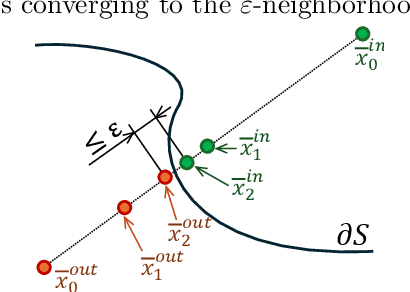


Abstract:Accurately estimating decision boundaries in black box systems is critical when ensuring safety, quality, and feasibility in real-world applications. However, existing methods iteratively refine boundary estimates by sampling in regions of uncertainty, without providing guarantees on the closeness to the decision boundary and also result in unnecessary exploration that is especially disadvantageous when evaluations are costly. This paper presents the Epsilon-Neighborhood Decision-Boundary Governed Estimation (EDGE), a sample efficient and function-agnostic algorithm that leverages the intermediate value theorem to estimate the location of the decision boundary of a black box binary classifier within a user-specified epsilon-neighborhood. Evaluations are conducted on three nonlinear test functions and a case study of an electric grid stability problem with uncertain renewable power injection. The EDGE algorithm demonstrates superior sample efficiency and better boundary approximation than adaptive sampling techniques and grid-based searches.
Resilient Fleet Management for Energy-Aware Intra-Factory Logistics
Mar 16, 2024Abstract:This paper presents a novel fleet management strategy for battery-powered robot fleets tasked with intra-factory logistics in an autonomous manufacturing facility. In this environment, repetitive material handling operations are subject to real-world uncertainties such as blocked passages, and equipment or robot malfunctions. In such cases, centralized approaches enhance resilience by immediately adjusting the task allocation between the robots. To overcome the computational expense, a two-step methodology is proposed where the nominal problem is solved a priori using a Monte Carlo Tree Search algorithm for task allocation, resulting in a nominal search tree. When a disruption occurs, the nominal search tree is rapidly updated a posteriori with costs to the new problem while simultaneously generating feasible solutions. Computational experiments prove the real-time capability of the proposed algorithm for various scenarios and compare it with the case where the search tree is not used and the decentralized approach that does not attempt task reassignment.
Eco-Driving Control of Connected and Automated Vehicles using Neural Network based Rollout
Oct 16, 2023Abstract:Connected and autonomous vehicles have the potential to minimize energy consumption by optimizing the vehicle velocity and powertrain dynamics with Vehicle-to-Everything info en route. Existing deterministic and stochastic methods created to solve the eco-driving problem generally suffer from high computational and memory requirements, which makes online implementation challenging. This work proposes a hierarchical multi-horizon optimization framework implemented via a neural network. The neural network learns a full-route value function to account for the variability in route information and is then used to approximate the terminal cost in a receding horizon optimization. Simulations over real-world routes demonstrate that the proposed approach achieves comparable performance to a stochastic optimization solution obtained via reinforcement learning, while requiring no sophisticated training paradigm and negligible on-board memory.
Greedy Heuristics Adapted for the Multi-commodity Pickup and Delivery Traveling Salesman Problem
Mar 09, 2023Abstract:The Multi-Commodity One-to-One Pickup and Delivery Traveling Salesman Problem finds the optimal tour that transports a set of unique commodities from their pickup to delivery locations, while never exceeding the maximum payload capacity of the material handling agent. For this NP hard problem, this paper presents adaptations of the nearest neighbor and cheapest insertion heuristics to account for the constraints related to the precedence between the locations and the cargo capacity limitations. To test the effectiveness of the proposed algorithms, the well-known TSPLIB benchmark data-set is modified in a replicable manner to create precedence constraints, while varying the cargo capacity of the agent. It is seen that the adapted Nearest Neighbor heuristic outperforms the adapted Cheapest Insertion algorithm in the majority of the cases studied, while providing near instantaneous solutions.
A Convex Hull Cheapest Insertion Heuristic for the Non-Euclidean and Precedence Constrained TSPs
Feb 05, 2023Abstract:The convex hull cheapest insertion heuristic is known to generate good solutions to the Euclidean Traveling Salesperson Problem. This paper presents an adaptation of this heuristic to the non-Euclidean version of the problem and further extends it to the problem with precedence constraints, also known as the Sequential Ordering Problem. To test the proposed algorithm, the well-known TSPLIB benchmark data-set is modified in a replicable manner to create non-Euclidean instances and precedence constraints. The proposed algorithm is shown to outperform the commonly used Nearest Neighbor algorithm in 97% of the cases that do not have precedence constraints. When precedence constraints exist such that the child nodes are centrally located, the algorithm again outperforms the Nearest Neighbor algorithm in 98% of the studied instances. Considering all spatial layouts of precedence constraints, the algorithm outperforms the Nearest Neighbor heuristic 68% of the time.
Data-driven Driver Model for Speed Advisory Systems in Partially Automated Vehicles
May 17, 2022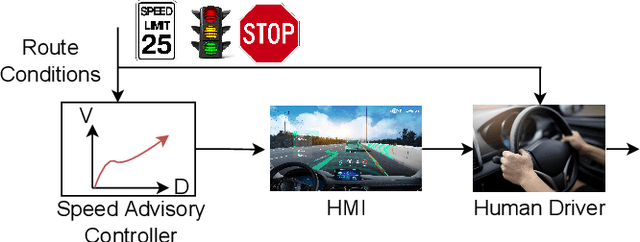
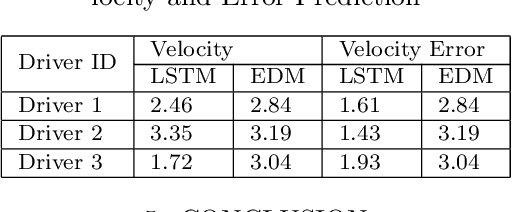
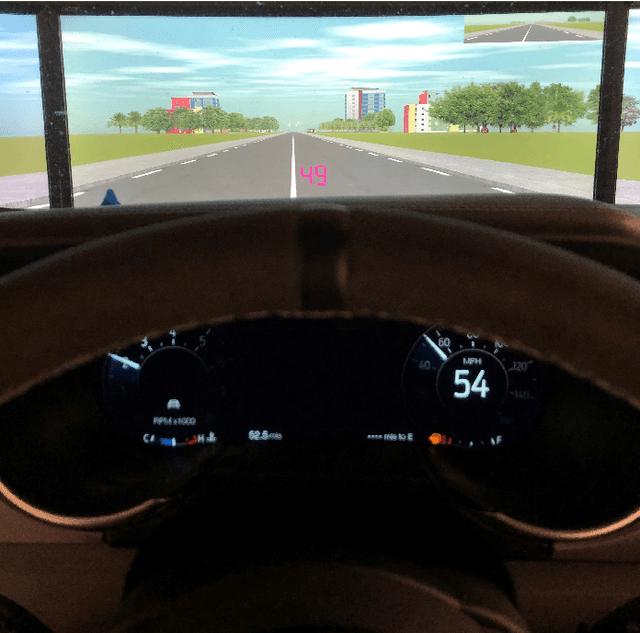
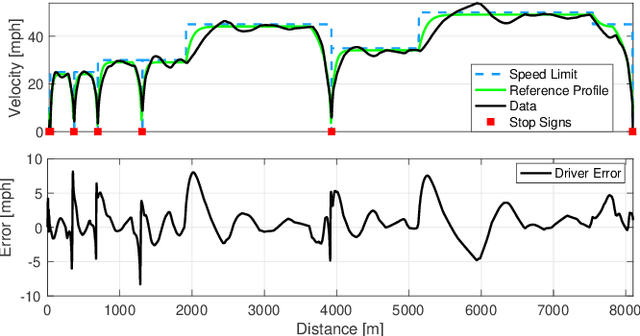
Abstract:Vehicle control algorithms exploiting connectivity and automation, such as Connected and Automated Vehicles (CAVs) or Advanced Driver Assistance Systems (ADAS), have the opportunity to improve energy savings. However, lower levels of automation involve a human-machine interaction stage, where the presence of a human driver affects the performance of the control algorithm in closed loop. This occurs for instance in the case of Eco-Driving control algorithms implemented as a velocity advisory system, where the driver is displayed an optimal speed trajectory to follow to reduce energy consumption. Achieving the control objectives relies on the human driver perfectly following the recommended speed. If the driver is unable to follow the recommended speed, a decline in energy savings and poor vehicle performance may occur. This warrants the creation of methods to model and forecast the response of a human driver when operating in the loop with a speed advisory system. This work focuses on developing a sequence to sequence long-short term memory (LSTM)-based driver behavior model that models the interaction of the human driver to a suggested desired vehicle speed trajectory in real-world conditions. A driving simulator is used for data collection and training the driver model, which is then compared against the driving data and a deterministic model. Results show close proximity of the LSTM-based model with the driving data, demonstrating that the model can be adopted as a tool to design human-centered speed advisory systems.
 Add to Chrome
Add to Chrome Add to Firefox
Add to Firefox Add to Edge
Add to Edge